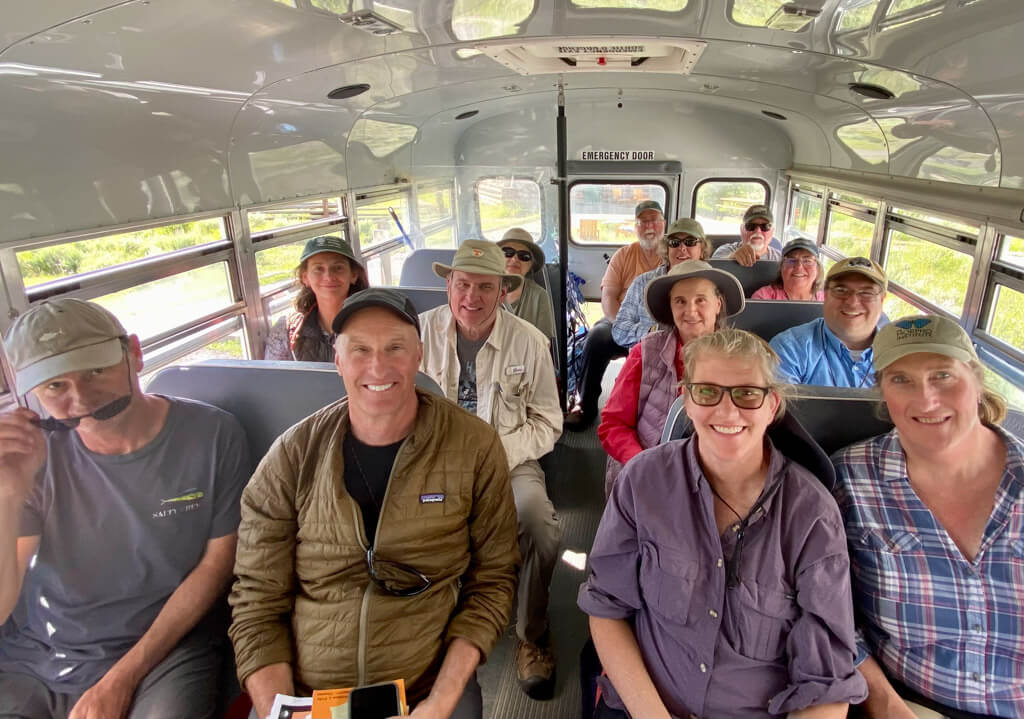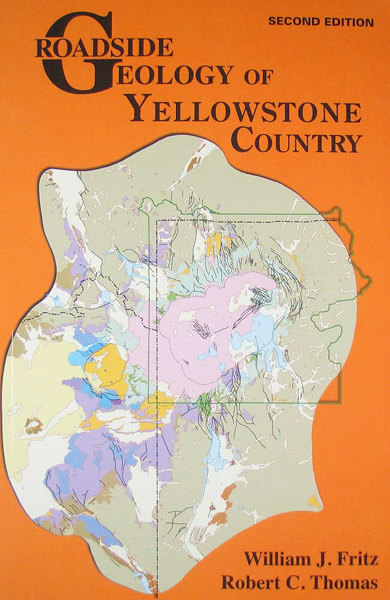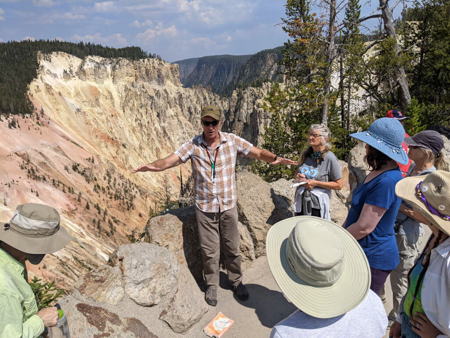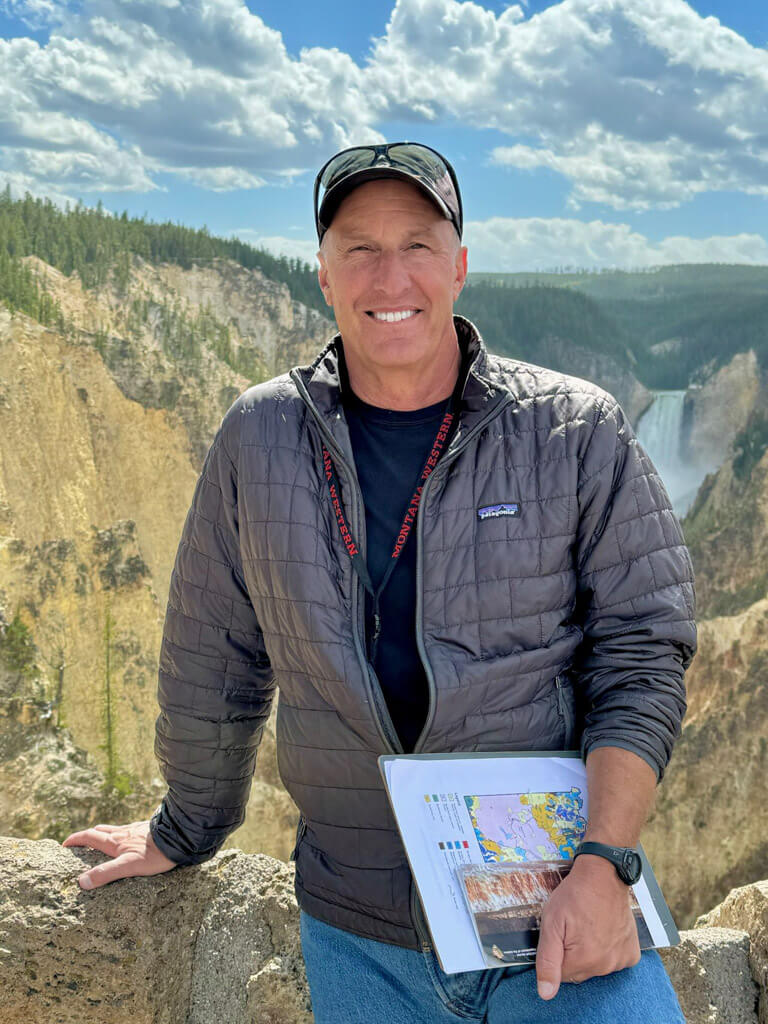Dr. Rob Thomas has been a longtime fixture with the Yellowstone Forever Institute teaching popular Field Seminars on Yellowstone region geology. He is once again leading his Roadside Geology of Yellowstone seminar this coming summer (June 25-28). Though currently sold out, there is still an opportunity to sign up for the waitlist.
We caught up with Rob and asked him about his history teaching in the region, what drives his passion for Montana and Yellowstone geology, his popular books on the subject, and what he hopes participants come away with from his Field Seminar this summer.
Looking for a deep dive into the region’s geology? Rob manages the popular Facebook group, Montana Geology.
When did you first visit Yellowstone National Park?
I first came to the park as a kid with my parents, where I was mesmerized by the evening presentations by rangers and decided that was the path I wanted to pursue in life. I returned as a geology major serving as a teaching assistant for several universities and eventually as a professor at the University of Montana Western in Dillon. During the summer of 1986, I was the teaching assistant for the summer geology field camp for the University of Montana and Georgia State University in Dillon, Montana. We toured the park as a part of the course. I continued to run field camps for the University of Washington, where I did my PhD, where we also toured the park. In 1995, I started teaching the Princeton University (later Penn and U. Houston) camp out of Red Lodge, which included time with the students in Yellowstone. I continued to do that camp annually until COVID. In addition, after arriving at the University of Montana Western, I built a geology program, and time in Yellowstone working on projects was a staple of the program.
How long have you been teaching about and in Yellowstone National Park? And what keeps you coming back?
During the summer of 1986, I returned to the park as a teaching assistant for the summer geology field camp offered by the University of Montana and Georgia State University in Dillon, Montana. We spent about a week in the park. I continued to do so through the University of Washington and ultimately with Princeton University once I arrived in Montana as a geology professor at the University of Montana Western in Dillon. These experiences led to a collaboration with Dr. William Fritz on the 2nd Edition of the Roadside Geology of Yellowstone Country, and a career researching the sedimentary deposits in the ancestral Missouri River that once flowed off the Yellowstone thermal bulges when it was in Idaho.
What do you hope participants come away with from your Field Seminar this summer?
 I want all students to gain an appreciation for the difficulty of science research, the careful gathering of data, the process of peer review before new ideas are released to the public, and the stark fact that science is a method we each incorporate into our daily lives in ways that are essential to our survival. I also want students to gain an appreciation for time and change. To understand that their world is not static, but ever changing through natural processes that we can understand and predict. I want them to learn that they occupy a miniscule fraction of time in the 4.6-billion-year history of our planet, and that they can, with some simple tools, read that record for themselves, and hopefully incorporate it in ways that provides perspective on their own lives.
I want all students to gain an appreciation for the difficulty of science research, the careful gathering of data, the process of peer review before new ideas are released to the public, and the stark fact that science is a method we each incorporate into our daily lives in ways that are essential to our survival. I also want students to gain an appreciation for time and change. To understand that their world is not static, but ever changing through natural processes that we can understand and predict. I want them to learn that they occupy a miniscule fraction of time in the 4.6-billion-year history of our planet, and that they can, with some simple tools, read that record for themselves, and hopefully incorporate it in ways that provides perspective on their own lives.
We humans are part of a lengthy evolutionary process that has changed our planet and resulted in our existence. Nothing more, nothing less.
How did your book Roadside Geology of Yellowstone Country come about? Do you have any publications in the works?
 During my time as a teaching assistant for Dr. William Fritz at Georgia State University, he handed me a freshly printed copy of the first edition of Roadside Geology of Yellowstone Country. It was a very thin book, black and white, and written prior to the incorporation that the Yellowstone hot spot was connected by plate motion to the Snake River Plain in Idaho. Fast forward to 2007, and I get a call from Bill that the publisher was going to terminate the book because it was dated, and they were moving to color. Bill was the president of a university back east and incapable of updating the book, so he asked me to do it. He thought it would take 3 months and that we could scan his old slides. A “few years” later, having rerun every road guide in the book, taken all new photographs and made new illustrations, the book was published in 2011. I followed it with the 2nd Edition of Roadside Geology of Montana in 2020 with Dr. Don Hyndman, which took us five years to complete and includes the Yellowstone Country. I am currently working on a geologic history book called Montana Rocks! that will also include stops in the greater Yellowstone region.
During my time as a teaching assistant for Dr. William Fritz at Georgia State University, he handed me a freshly printed copy of the first edition of Roadside Geology of Yellowstone Country. It was a very thin book, black and white, and written prior to the incorporation that the Yellowstone hot spot was connected by plate motion to the Snake River Plain in Idaho. Fast forward to 2007, and I get a call from Bill that the publisher was going to terminate the book because it was dated, and they were moving to color. Bill was the president of a university back east and incapable of updating the book, so he asked me to do it. He thought it would take 3 months and that we could scan his old slides. A “few years” later, having rerun every road guide in the book, taken all new photographs and made new illustrations, the book was published in 2011. I followed it with the 2nd Edition of Roadside Geology of Montana in 2020 with Dr. Don Hyndman, which took us five years to complete and includes the Yellowstone Country. I am currently working on a geologic history book called Montana Rocks! that will also include stops in the greater Yellowstone region.
As for technical research, I have been studying the ancestral Missouri River system for the last 32 years. The modern drainage started during the outbreak of the Yellowstone hot spot, flowing northeast off the thermal bulge down valleys from 17 and 4.5 million years ago. Around 4.5 million years ago, these drainages were disrupted as plate motion moved the hot spot northeast to its present position under the park, causing the crust to collapse in Montana, forming northwest-trending valleys in its wake that captured the river in places. As a result, the present drainage is a composite of these two valley-forming events. I am particularly interested in the gigantic flows of water, ash and other debris that went down the old Missouri during times of caldera-forming eruptions of Yellowstone. They are possibly unique deposits on the planet and help us understand and predict the future for communities, like Livingston and Jackson, which reside in valleys connected by rivers to the active caldera.


Comments are closed.